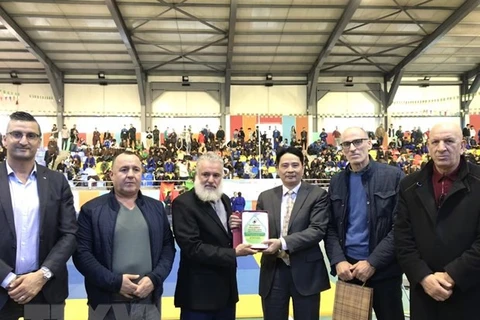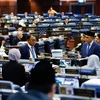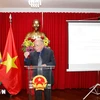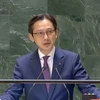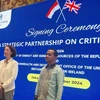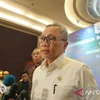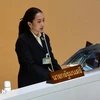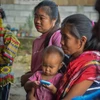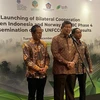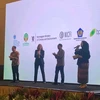Algiers (VNA) – Mohamed Berzig, Secretary General of the Algeria-Vietnam Friendship Association, has praised the solidarity and undaunted spirit of the Vietnamese people in the “Dien Bien Phu in the Air” campaign 50 years ago.
In December 1972, the US imperialists launched a strategic aerial bombing operation called “Linebacker II” in the capital city of Hanoi and the northern port city of Hai Phong.
In this operation, the US military mobilised the greatest force since World War II: 193 of the 400 B-52 bombers that the US had at that time; 1,077 of the 3,043 tactical aircraft (including a squadron of about 50 F-111 fighters); six of the 24 aircraft carriers; more than 50 tanker aircraft, other types of service planes, and 60 warships of all kinds from the US Seventh Fleet in the Pacific.
Throughout 12 days and nights, the US planes dropped more than 100,000 tonnes of bombs onto Hanoi, Hai Phong and a number of localities in northern Vietnam.
Vietnamese defence forces and people of the North resisted strongly, shooting down 81 aircraft, including 34 B-52s, and killing or catching hundreds of US pilots. The heavy losses forced the US administration to stop bombardments on areas to the north of the 20th parallel, invite Vietnam to return to the negotiations in Paris, and prepare for the signing of the agreement on ending the war and restoring peace in Vietnam.
The Paris Agreement, signed on January 27, 1973, laid the foundation for the complete liberation of the South and reunification of the country.
Berzig, a researcher on Vietnam, described the victory as glorious and decisive to the liberation of the South, saying it created a premise for national reunification in 1975.
The Vietnamese people proved their resolve and courage in the wars against France and the US, which have been carried forward in the current process of national construction and development, he stressed.
Berzig also lauded Vietnam’s rapid development at present and expressed his hope that relations between Vietnam and Algeria will be consolidated in the time ahead./.
In December 1972, the US imperialists launched a strategic aerial bombing operation called “Linebacker II” in the capital city of Hanoi and the northern port city of Hai Phong.
In this operation, the US military mobilised the greatest force since World War II: 193 of the 400 B-52 bombers that the US had at that time; 1,077 of the 3,043 tactical aircraft (including a squadron of about 50 F-111 fighters); six of the 24 aircraft carriers; more than 50 tanker aircraft, other types of service planes, and 60 warships of all kinds from the US Seventh Fleet in the Pacific.
Throughout 12 days and nights, the US planes dropped more than 100,000 tonnes of bombs onto Hanoi, Hai Phong and a number of localities in northern Vietnam.
Vietnamese defence forces and people of the North resisted strongly, shooting down 81 aircraft, including 34 B-52s, and killing or catching hundreds of US pilots. The heavy losses forced the US administration to stop bombardments on areas to the north of the 20th parallel, invite Vietnam to return to the negotiations in Paris, and prepare for the signing of the agreement on ending the war and restoring peace in Vietnam.
The Paris Agreement, signed on January 27, 1973, laid the foundation for the complete liberation of the South and reunification of the country.
Berzig, a researcher on Vietnam, described the victory as glorious and decisive to the liberation of the South, saying it created a premise for national reunification in 1975.
The Vietnamese people proved their resolve and courage in the wars against France and the US, which have been carried forward in the current process of national construction and development, he stressed.
Berzig also lauded Vietnam’s rapid development at present and expressed his hope that relations between Vietnam and Algeria will be consolidated in the time ahead./.
VNA



